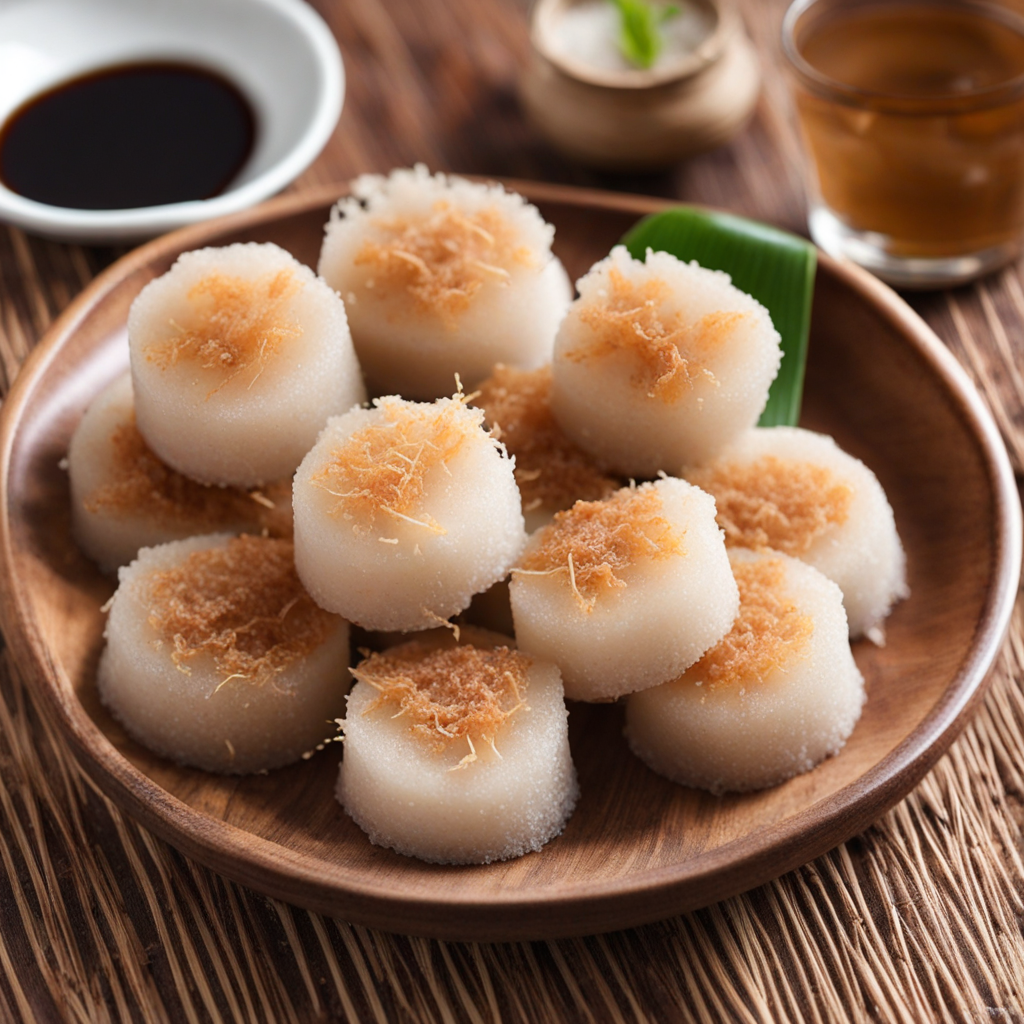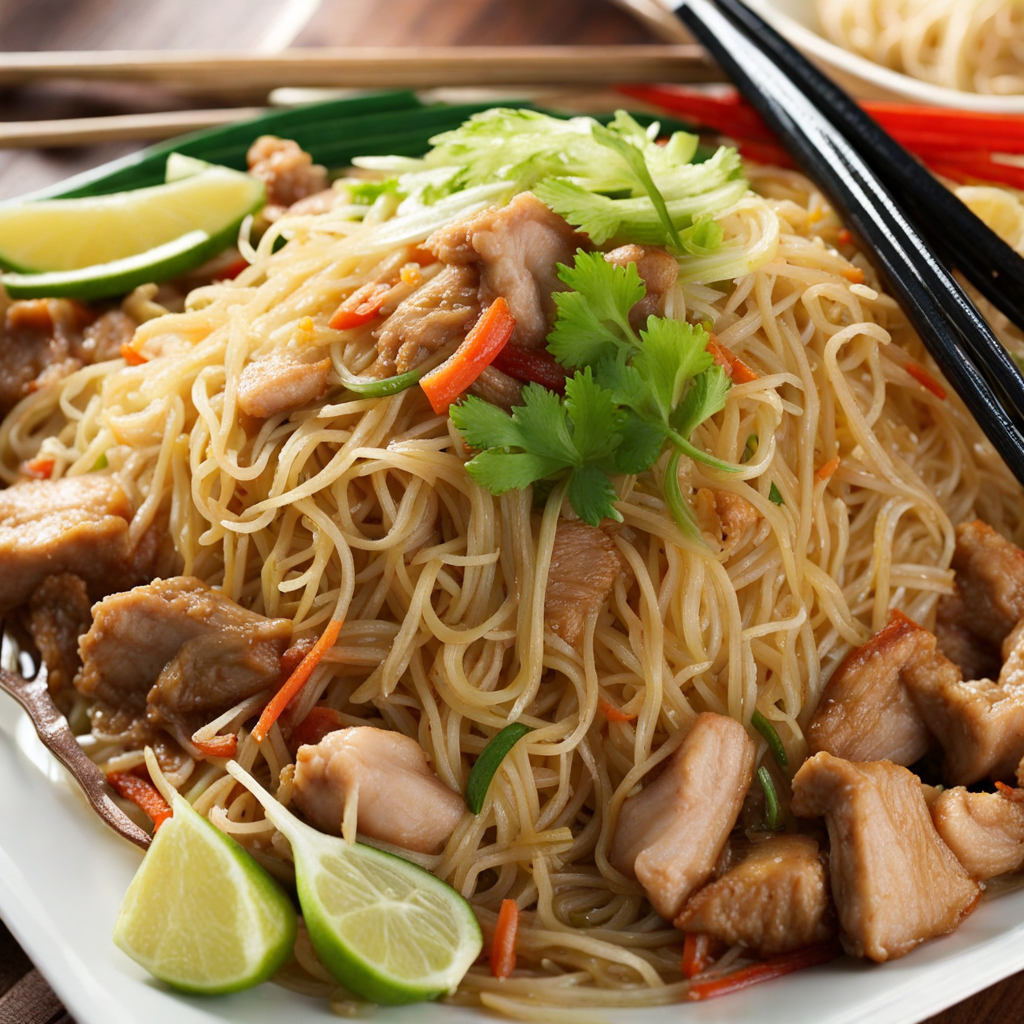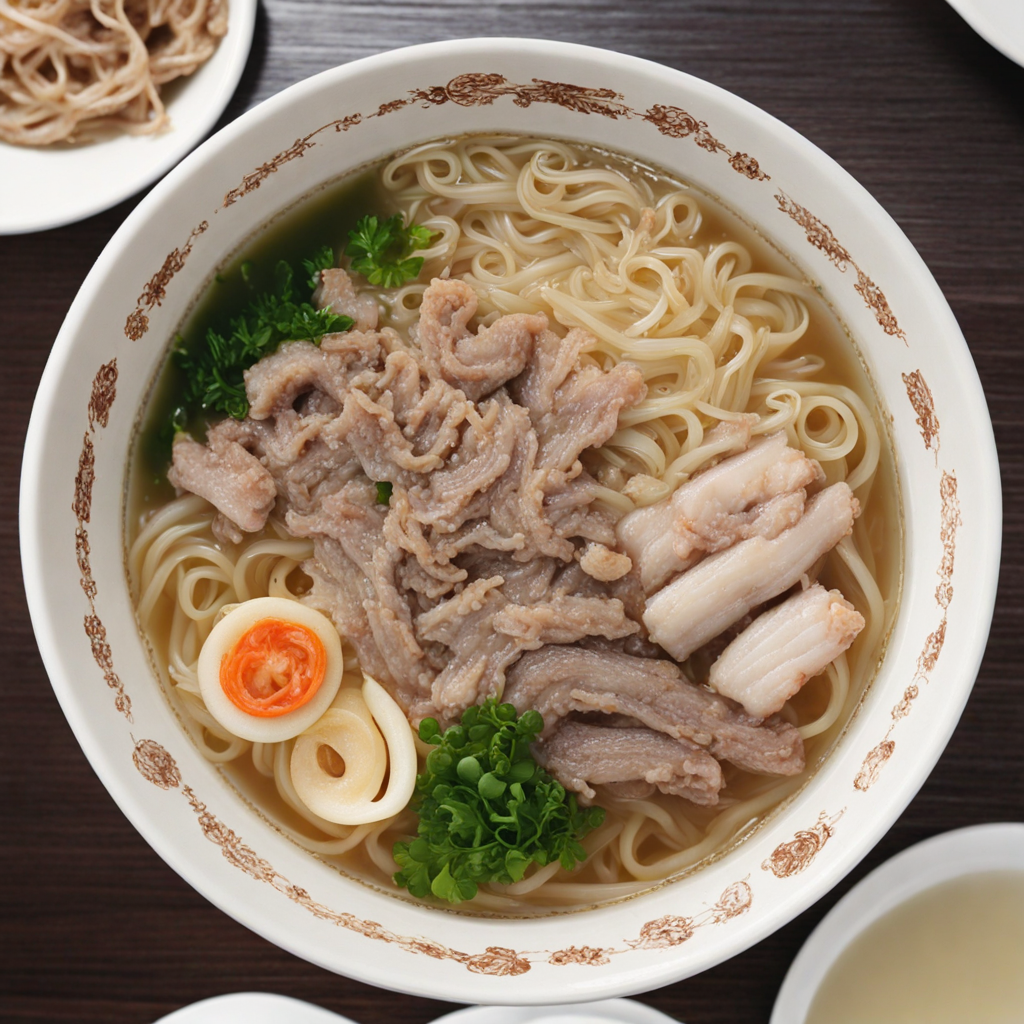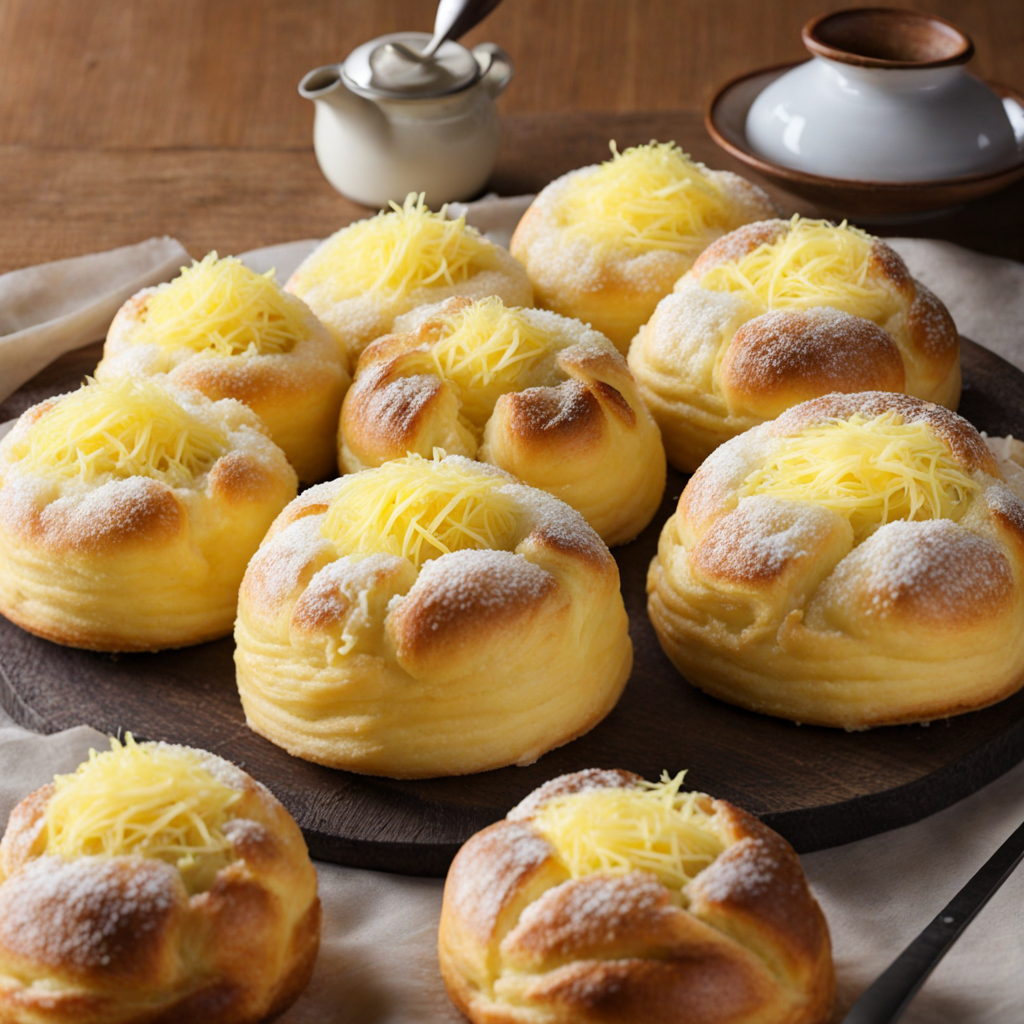Kutsinta
Kutsinta is a traditional Filipino delicacy that stands out for its unique, chewy texture and slightly sweet flavor. This steamed rice cake is made from a mixture of rice flour, brown sugar, and lye water, which gives it its distinct gelatinous quality. The lye water, or "lye" as it’s commonly called, not only contributes to its chewy texture but also imparts a slightly nutty flavor that balances the sweetness of the sugar. Kutsinta is often served in small, round molds, resulting in bite-sized treats that are perfect for snacking or as part of a larger meal spread. Typically, kutsinta is enjoyed warm and can be topped with freshly grated coconut, adding a rich, creamy contrast to the cake's sweetness. The coconut not only enhances the flavor but also provides a delightful texture that complements the chewy base. Often found in local markets and food stalls, kutsinta is a popular choice during festive occasions and celebrations, making it a beloved staple in Filipino cuisine. Its vibrant amber color, derived from the brown sugar, also makes it visually appealing, drawing people in with its inviting appearance. For those eager to explore new tastes, kutsinta offers a glimpse into the culinary culture of the Philippines. The combination of sweet and slightly savory flavors, along with the unique texture, creates a delightful experience for the palate. Whether enjoyed as a snack or as part of a larger feast, kutsinta is a testament to the rich culinary traditions of the Philippines, inviting food lovers to savor a piece of its heritage.
How It Became This Dish
The Delicious Journey of Kutsinta: A Filipino Delicacy Kutsinta, a beloved Filipino delicacy, is a sweet rice cake that has captured the hearts and palates of many. Known for its unique flavor and distinctive texture, this treat has a rich history intertwined with the cultural tapestry of the Philippines. To understand Kutsinta is to delve into the origins of Filipino cuisine, its evolution, and its significance in Filipino culture. #### Origins: A Fusion of Cultures The history of Kutsinta can be traced back to the pre-colonial era of the Philippines, when the archipelago was a melting pot of various cultures. It is believed that Kutsinta, like many traditional Filipino dishes, is a product of indigenous cooking techniques combined with influences from foreign traders and colonizers. The name "Kutsinta" is derived from the word "kutsinta," which has various interpretations, including "to cut" in some regions, referring to the cake's shape, or "to mix," reflecting the ingredients' combination. The basic ingredients of Kutsinta are rice flour, brown sugar, and water, mixed to create a batter that is steamed in small, round molds. This method of preparation is indicative of the cooking practices that predate Spanish colonization, which began in the 16th century. The introduction of new ingredients, such as lye water (a key component that gives Kutsinta its distinct chewy texture and reddish-brown hue), can be attributed to Chinese culinary influences, particularly through the trade relationships established during the Ming Dynasty. #### Cultural Significance Kutsinta holds a special place in Filipino culture. It is often served during celebrations, religious gatherings, and special occasions, symbolizing togetherness and community. The food is typically enjoyed during breakfast or as a snack, often accompanied by other Filipino delicacies like puto (another rice cake) and sago (tapioca pearls). The act of sharing Kutsinta reflects the Filipino value of "bayanihan," a spirit of communal unity and cooperation. In many regions, Kutsinta is not just a dish but a representation of familial and regional pride. Different provinces have their own unique takes on Kutsinta, incorporating local ingredients and flavors. For instance, in some areas, grated coconut is added as a topping, while others might include a hint of pandan or ube (purple yam) for additional flavor and color. These variations highlight the diversity of Filipino cuisine and the creativity of local cooks. #### Development Over Time As the Philippines evolved through the centuries, so did Kutsinta. During Spanish colonization, the introduction of new cooking techniques and ingredients further enriched Filipino culinary traditions. The sugarcane industry grew significantly, allowing for the widespread use of sugar in various dishes, including Kutsinta. The addition of lye water, which gives the rice cake its characteristic elasticity, became more popular during this time, reflecting the blending of indigenous and foreign techniques. The 20th century brought significant changes to Filipino society, including urbanization and globalization, both of which impacted how traditional foods were prepared and consumed. As Filipinos migrated to urban areas and abroad, Kutsinta found its way into bakeries and restaurants, becoming more accessible to a wider audience. It also began to appear in international food festivals, showcasing Filipino cuisine on a global stage. The rise of social media in the 21st century has further transformed the way Kutsinta is perceived and shared. Food bloggers and influencers have played a pivotal role in introducing this traditional delicacy to younger generations and international audiences. Creative presentations and adaptations have emerged, with some bakers experimenting with flavors such as chocolate or matcha, while maintaining the essence of the original recipe. #### Kutsinta Today Today, Kutsinta is more than just a traditional dessert; it is a symbol of Filipino identity and resilience. It is often served during important events such as weddings, birthdays, and fiestas, where it plays a role in the celebration of Filipino heritage. The dish is also a staple in numerous "merienda" (snack) offerings across the country, enjoyed alongside other rice cakes and treats. Kutsinta has also gained popularity beyond the Philippines, particularly in communities with significant Filipino populations, such as the United States, Canada, and Australia. Filipino restaurants and markets often feature Kutsinta, introducing it to a broader audience and allowing those who have migrated to maintain a connection to their cultural roots. #### Conclusion The journey of Kutsinta is a testament to the Philippines' rich culinary heritage, reflecting the interplay of history, culture, and community. From its humble origins as a traditional rice cake to its modern-day adaptations, Kutsinta serves as a delicious reminder of the country's vibrant past and its ever-evolving culinary landscape. As Filipinos continue to embrace and celebrate their food traditions, Kutsinta remains a cherished delicacy that brings people together, bridging generations and cultures through its sweet, chewy delight. In a world where food often transcends boundaries, Kutsinta stands proud, inviting everyone to savor a piece of Filipino history with every bite. Whether enjoyed at a family gathering, a local market, or a far-off land, Kutsinta is not just a treat; it is a story of resilience, creativity, and love—a true embodiment of the Filipino spirit.
You may like
Discover local flavors from Philippines







